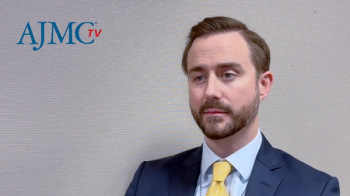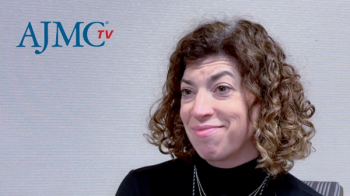
The American Journal of Managed Care
- August 2016
- Volume 22
- Issue 8
Aligning Payment Reform and Delivery Innovation in Emergency Care
The authors apply HHS’s payment taxonomy framework to acute unscheduled care and describe how payment reform supports delivery innovation.
ABSTRACT
Current alternative payment models (APMs) that move away from traditional fee-for-service payment often have explicit goals to reduce utilization in episodic settings, such as emergency departments (ED). We apply the new HHS payment reform taxonomy to illustrate a pathway to success for EDs in APMs. Despite the unique challenges faced by EDs, a variety of category 2 and 3 APMs may be applicable to EDs in the short- and long term to improve efficiency and value. Full and partially capitated models create incentives for longitudinal and episodic ED providers and payers to unite to create interventions to reduce costs. However, prospective attribution remains a challenge for EDs because of exogenous demand, which makes it important for EDs to be one of the components of capitated payment along with longitudinal providers who can exert greater control on overall care demands. The goal of payment and delivery reforms in ED care is to improve population health across the continuum of acute and longitudinal care. In order to deliver cost-conscious care, ED providers will need additional resources, expanded information, and new processes and metrics to facilitate cost-conscious decisions. Improved availability of electronic information across settings, evidence generated from developing and testing acute care—specific payment models, and engaging acute care providers directly in reform efforts will help meet these goals.
Am J Manag Care. 2016;22(8):515-518
Take-Away Points
Emergency care is a vital part of the US health system, providing a safety net, care in public health emergencies, and convenient around-the-clock care. Many reforms attempt to reduce the demand of acute services, but few attempt to improve the efficiency of the acute care system through payment reform and delivery innovation. This paper:
- Provides a path to transition acute care away from fee-for-service.
- Describes how payment reform can support specific acute care delivery innovations.
- Details practical next steps for acute care physicians, policy makers, and hospitals.
Hospital-based emergency departments (EDs) play a central role in US healthcare delivery, with 136 million visits in 2011.1 For decades, increases in ED visit rates have outpaced population growth, and led to overcrowding, when coupled with rising intensity of care and more ED-based imaging, laboratory tests, and treatments.2,3 ED care is often fragmented and more costly than other settings; as a result, EDs are a target for reforms.4
The Affordable Care Act and, more recently, the Medicare Access and CHIP Reauthorization Act of 2015 (MACRA), both promote the adoption of alternative payment models (APMs) to improve patient outcomes and reduce costs.5 Yet, how APMs will apply to EDs is unclear.6,7 Accountable care organizations and other risk-bearing entities primarily focus on reducing ED visits rather than engaging with EDs to improve care delivery across settings.
However, implementing APMs in EDs will have several challenges: 1) EDs do not control the demand for ED care; rather, care demands come from surrounding community needs8,9,; 2) most of today’s EDs are not designed to follow patients longitudinally, making it difficult to track overall patient costs; 3) EDs must comply with the Emergency Medical Treatment and Labor Act (EMTALA) and treat patients regardless of their ability to pay, and as a result, EDs serve as the safety net; 4) EDs are indispensable resources during public health emergencies; therefore, if APMs impact ED viability, additional resources will be necessary to provide a safety net and respond to disasters, and 5) because ED standards of care often involve liberal diagnostic testing and admission to rule out life-threatening conditions,10-12 changing care patterns via payment reform may increase misdiagnoses.13,14
Potential Alternative Payment and Delivery Models for EDs
Despite these challenges, several APMs are potentially applicable to EDs. In Table 1,15 descriptions of APMs from categories 1 through 4 are presented in the new HHS payment taxonomy framework.7
Category 1. Category 1 starts with traditional fee-for-service (FFS), and each higher-level category shifts to person- or population-level payments, increasing financial risk and accountability, and aggregating payments across providers.
Category 2. Category 2 links FFS payments with quality. In practice, FFS would continue, but EDs could receive additional payments for reaching benchmarks (ie, better patient experience, improved care); or for value-creating activities, such as care coordination and preventing admissions; or for specific services, such as patient call-backs. Paying directly for ED care coordination can improve care and reduce costs. For example, the ED physicians at Upper Chesapeake Hospital in Maryland call back certain patients after ED discharge to ensure care plans are executed properly. The program successfully identifies short-term problems, improves patient experience, and pushes the ED to think beyond episodic care to a more longitudinal approach. ED physicians receive $20 per patient for this service.16
Category 3. Category 3 consists of shared savings and risk models, where groups of providers and facilities would receive FFS payments, but also share in the upside and downside relative to a pre-specified budget. With target costs in mind, ED providers can establish frequent-user programs, which reduce costs through personalized care plans for patients with complex and psychosocial needs. For example, the home visit program at the University of Colorado, called Bridges to Care, enrolls high-cost ED patients in a health-coaching program facilitated by local federally qualified health centers. Patients are connected to a nurse practitioner, who makes home visits to identify care barriers and designs individualized interventions. In this model, the ED has an incentive to connect patients to value-producing activities that reduce costs and result in shared savings.17 However, because ED investments are required to implement these programs, it is important to ensure ED providers benefit from shared savings.
Bundled payments for episodic illness are another model in category 3. For example, ED providers can be paid a fixed amount for minor conditions, where monitoring for short-term relapses and complications are important (eg, asthma exacerbations, cellulitis). EDs can focus on bringing these cases to a close by scheduling ED or clinic follow-up for reevaluation. For higher-acuity conditions, where extended observation may be needed (eg, transient ischemic attack, chest pain), ED-based observation care improves care efficiency by reducing avoidable hospital admissions.18 For example, Arkansas’s Health Care Payment Improvement Initiative established acute care—specific retrospective bundles across Medicaid and its 3 largest commercial payers. The asthma bundle is triggered by a hospital visit (ED or inpatient) and includes all related facility services, inpatient professional services, ED visits, observations, labs and diagnostics, outpatient costs (eg. counseling), medications, and select costs for relevant care for 30 days.19
Category 4. At the end of the spectrum, category 4 includes population-based payments, such as capitation and global budgets. Here, ED providers, or their facilities, would receive a fixed payment based on prior utilization, the local population, or total expected costs for a period of time. Population-based payments provide the greatest incentive to build systems to reduce inefficient care and to prevent acute care visits entirely through disruptive innovations (ie, telemedicine), as well as to shift low-acuity care into other settings (ie, urgent care centers). The Kaiser On-Call program provides members with 24/7 access to nurses and physicians to facilitate decisions regarding care setting.20 Through Kaiser Permanente California’s unique integrated structure and contractual relationships, ED physicians are paid a market-competitive base salary with incentives based on quality and patient experience measures. There are no financial incentives for providing unneeded services and no financial gain for withholding clinically necessary care.
Full and partially capitated models create incentives for longitudinal and episodic ED providers to collaborate and reduce costs across the continuum. However, prospective attribution remains a challenge for EDs because they fall under EMTALA and do not directly control much of their demand. Therefore, EDs should ideally be a component of a capitated payment rather than the risk-bearing entity.
The Reform Roadmap to Delivering Integrated Acute Care
MACRA has provided opportunities through the Physician-Focused Payment Model Technical Advisory Committee for the development of specialty APMs. As such, ED physicians are a critical stakeholder to enable successful implementation of ED APMs and provide guidance to CMS on how APMs should be applied to acute care. One key area of need is related to the major gaps in ED quality measures. Most focus on discrete care processes for limited conditions or measure only 1 domain of quality, such as care timeliness (eg, ED boarding time).21 With ED physician input, valid and reliable quality measures can be developed to ensure desired outcomes are achieved and care is not stinted.
Measures should be developed with 3 key principles in mind. First, guidelines and pathways for specific complaints should be adhered to.22 Second, resource utilization should be balanced with measures of misdiagnoses and diagnostic yield.22-24 Third, information sharing is a necessary component to cost-effective ED care (ie, interoperability of information across settings). Through the American College of Emergency Physician’s Clinical Emergency Data Registry, an expanding list of quality metrics developed by ED physicians will be useful to monitor quality or for use in APMs.25 ED payment and delivery models should also be tested, prior to scaling, for safety and unintended consequences. The goal is for patients to continue to receive high-quality acute and emergency care, and that access is not reduced by implicit incentives in APMs. Table 2 provides a roadmap to integrate acute care super-imposed on the HHS payment taxonomy framework. This illustrates how EDs can move from category 2 to 4 through payment and delivery reforms, and describes potential barriers and specific information-sharing requirements.
Conclusions
Ultimately, the goal of payment and delivery reforms in emergency care is about collaborating with the ED to improve population health across the continuum of care. Transitioning from FFS to APMs needs to occur gradually; ideally, it should be disruptive, but not destructive, to the fundamental functions of EDs. FFS with links to quality may be the most viable short-term model to help EDs prepare for APMs. As this transition progresses across care settings, EDs, health systems, and the government will also need to monitor how potential volume reductions in ED visits impact the long-term financial sustainability of EDs, given high fixed costs.
Author Affiliations: The Brookings Institution (JMP), Washington, DC; George Washington University (JMP), Washington, DC; Duke University (FM, MG, MM), Durham, NC; University of Colorado (JW), Denver, CO.
Source of Funding: Dr Richard Merkin and The Merkin Family Foundation.
Author Disclosures: The authors report no relationship or financial interest with any entity that would pose a conflict of interest with the subject matter of this article.
Authorship Information: Concept and design (MG, FM, MM, JMP); acquisition of data (MG, FM); analysis and interpretation of data (MG, FM, MM, JMP, JW); drafting of the manuscript (MG, FM, MM, JMP, JW); critical revision of the manuscript for important intellectual content (MG, FM, MM, JMP, JW); obtaining funding (MM); administrative, technical, or logistic support (MG, FM, MM); and supervision (MM, JMP).
Address Correspondence to: Jesse M. Pines, MD, George Washington University, 2100 Pennsylvania Ave NW, Rm 314, Washington, DC 20037. E-mail: pinesj@gwu.edu.
REFERENCES
1. National Hospital Ambulatory Medical Care Survey: 2011 emergency department summary tables. CDC website. http://www.cdc.gov/nchs/data/ahcd/nhamcs_emergency/2011_ed_web_tables.pdf. Accessed July 27, 2016.
2. Pitts SR, Pines JM, Handrigan MT, Kellermann AL. National trends in emergency department occupancy, 2001 to 2008: effect of inpatient admissions versus emergency department practice intensity. Ann Emerg Med. 2012;60(6):679-686.e3. doi: 10.1016/j.annemergmed.2012.05.014.
3. Wiler JL, Gentle C, Halfpenny JM, et al. Optimizing emergency department front-end operations. Ann Emerg Med. 2010;55(2):142-160.e1. doi: 10.1016/j.annemergmed.2009.05.021.
4. Pines JM, Newman D, Pilgrim R, Schuur JD. Strategies for integrating cost-consciousness into acute care should focus on rewarding high-value care. Health Aff (Millwood). 2013;32(12):2157-2165. doi: 10.1377/hlthaff.2013.0685.
5. Lands of opportunity: bringing telecommunications services to rural communities. FCC website. https://transition.fcc.gov/indians/opportunity.pdf. Published July 2006. Accessed July 27, 2016
6. Adler-Milstein J, Kvedar J, Bates DW. Telehealth among US hospitals: several factors, including state reimbursement and licensure policies, influence adoption. Health Aff (Millwood). 2014;33(2):207-215. doi: 10.1377/hlthaff.2013.1054.
7. Connecting America: the national broadband Plan. FCC website. https://transition.fcc.gov/national-broadband-plan/national-broadband-plan.pdf. Published March 17, 2010. Accessed July 27, 2016.
8. Ragin DF, Hwang U, Cydulka RK, et al; Emergency Medicine Patients’ Access To Healthcare (EMPATH) Study Investigators. Reasons for using the emergency department: results of the EMPATH Study. Acad Emerg Med. 2005;12(12):1158-1166.
9. Pines JM, Lotrecchiano GR, Zocchi MS, et al. Conceptual model for episodes of acute, unscheduled care. Ann Emerg Med. 2016. pii: S0196-0644(16)30209-8. doi: 10.1016/j.annemergmed.
10. Pang PS, Schuur JD. Emergency departments, acute heart failure, and admissions: one size does not fit all. JACC Heart Fail. 2014;2(3):278-280. doi: 10.1016/j.jchf.2014.03.003.
11. Sabbatini AK, Nallamothu BK, Kocher KE. Reducing variation in hospital admissions from the emergency department for low-mortality conditions may produce savings. Health Aff (Millwood). 2014;33(9):1655-1663. doi: 10.1377/hlthaff.2013.1318.
12. Swap CJ, Nagurney JT. Value and limitations of chest pain history in the evaluation of patients with suspected acute coronary syndromes. JAMA. 2005;294(20):2623-2629.
13. Pope JH, Aufderheide TP, Ruthazer R, et al. Missed diagnoses of acute cardiac ischemia in the emergency department. N Engl J Med. 2000;342(16):1163-1170.
14. Powell ES, Khare RK, Courtney DM, Feinglass J. Volume of emergency department admissions for sepsis is related to inpatient mortality: results of a nationwide cross-sectional analysis. Crit Care Med. 2010;38(11):2161-2168. doi: 10.1097/CCM.0b013e3181f3e09c.
15. Better care. smarter spending. healthier people: paying providers for value, not volume. CMS website. https://www.cms.gov/Newsroom/MediaReleaseDatabase/Fact-sheets/2015-Fact-sheets-items/2015-01-26-3.html. Published January 26, 2015. Accessed July 27, 2016.
16. Wang T, Srebotnjak T, Brownell J, Hsia RY. Emergency department charges for asthma-related outpatient visits by insurance status. J Health Care Poor Underserved. 2014;25(1):396-405. doi: 10.1353/hpu.2014.0051.
17. Kane CK, Emmons DW; American Medical Association. New data on physician practice arrangements: private practice remains strong despite shifts toward hospital employment. New Mexico Medical Society website. http://www.nmms.org/sites/default/files/images/2013_9_23_ama_survey_prp-physician-practice-arrangements.pdf. Published September 2013. Accessed July 27, 2016.
18. Baugh CW, Venkatesh AK, Hilton JA, Samuel PA, Schuur JD, Bohan JS. Making greater use of dedicated hospital observation units for many short-stay patients could save $3.1 billion a year. Health Aff (Millwood). 2012;31(10):2314-2323. doi: 10.1377/hlthaff.2011.0926.
19. Casalino LP, Pesko MF, Ryan AM, et al. Small primary care physician practices have low rates of preventable hospital admissions. Health Aff (Millwood). 2014;33(9):1680-1688. doi: 10.1377/hlthaff.2014.0434.
20. Selevan J, Kindermann D, Pines JM, Fields WW. What accountable care organizations can learn from Kaiser Permanente California’s acute care strategy. Popul Health Manag. 2015;18(4):233-236. doi: 10.1089/pop.2014.0157.
21. Schuur JD, Hsia RY, Burstin H, Schull MJ, Pines JM. Quality measurement in the emergency department: past and future. Health Aff (Millwood). 2013;32(12):2129-2138. doi: 10.1377/hlthaff.2013.0730.
22. Griffey RT, Pines JM, Farley HL, et al. Chief complaint-based performance measures: a new focus for acute care quality measurement. Ann Emerg Med. 2015;65(4):387-395. doi: 10.1016/j.annemergmed.2014.07.453.
23. Raja AS, Ip IK, Prevedello LM, et al. Effect of computerized clinical decision support on the use and yield of CT pulmonary angiography in the emergency department. Radiology. 2012;262(2):468-474. doi: 10.1148/radiol.11110951.
24. Kindermann DR, McCarthy ML, Ding R, et al. Emergency department variation in utilization and diagnostic yield of advanced radiography in diagnosis of pulmonary embolus. J Emerg Med. 2014;46(6):791-799. doi: 10.1016/j.jemermed.2013.12.002.
25. CEDR—Clinical Emergency Data Registry. American College of Emergency Physicians website. http://www.acep.org/cedr/. Accessed July 27, 2016.
Articles in this issue
about 9 years ago
The Impact of Patient-Centered Medical Homes on Safety Net Clinicsover 9 years ago
Choosing Wisely: Spine Imagingover 9 years ago
The Financial Impact of Team-Based Care on Primary CareNewsletter
Stay ahead of policy, cost, and value—subscribe to AJMC for expert insights at the intersection of clinical care and health economics.















































